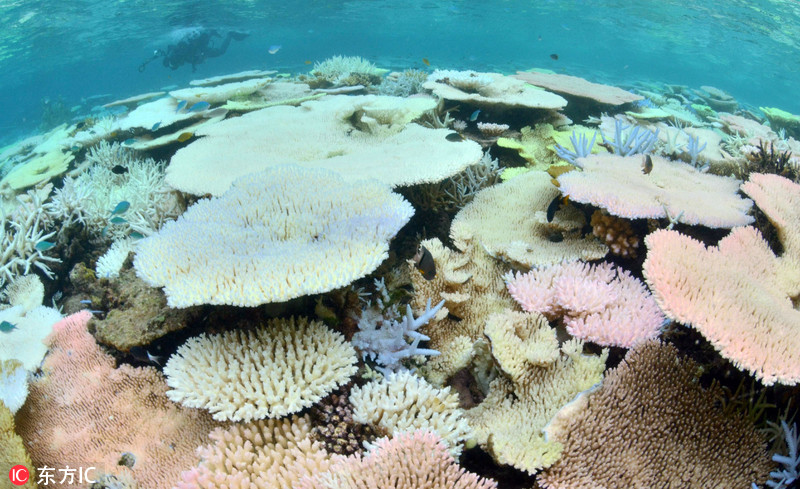Despite hundreds of click bait articles shared millions of times around the internet “the reef is dying” or “worst coral bleaching ever”, our global information map of coral bleaching is still quite sparse. While millions are concerned with this prevalent topic, few are willing to dive deep past the haunting titles and make a difference when it comes to global coral bleaching awareness.
Coral bleaching has been reported for decades, with the first known report coming from the Caribbean in the 1960s. For the next two decades bleaching reports began to trickle in with a handful of observations from the 60s and 70s. By the 1980s reports grew exponentially with 236 reported bleaching events during the 1980s, 1874 during the 1990s, and 5094 during the 2000s.
But on a grand scale, these reports are only a drop in the ocean. One of the biggest challenges with marine research, including studying coral reefs, is that the ocean is so vast that only small pockets are accessible by humans. And only a small percentage of these reefs are visited by coral researchers, managers, divers, or reef enthusiasts willing to document and report the occurrence of coral bleaching.
There are existing databases like ReefBase where volunteers can report sightings of coral bleaching. These global datasets are becoming more user-friendly which can encourage more upload, however, these findings are still limited.
The database is open to everyone, but unless you know about the website or the dive center you are with are promoting this activity, there is good chance you wouldn’t even know it exists. This further limits data to regions where ReefBase is promoted or coral data collections are already happening.
A team of researchers from the University of British Columbia has taken this database a step further to create a new, high-resolution global mass coral bleaching database. What they found was an increased observed bleaching reports by 79%.
To build their new database the team combined known reports from existing datasets and created new data point by mining old literature. They also personally contacted scientist and divers involved in coral reef monitoring, and in the most Canadian way possible asked nicely if they would share their coral bleaching information.
The expanded global observational bleaching database provides insight into the patterns in mass coral bleaching over time and the relationship between bleaching and thermal stress. The database will help the scientific community more accurately assess the change in the frequency of mass coral bleaching events, validate methods of predicting mass coral bleaching, and test whether coral reefs are adjusting to rising ocean temperatures. [UBC News]
New Global Mass Coral Bleaching Database

Share This
Previous Article
Reef2Reef Acquires 3Reef
Next Article


